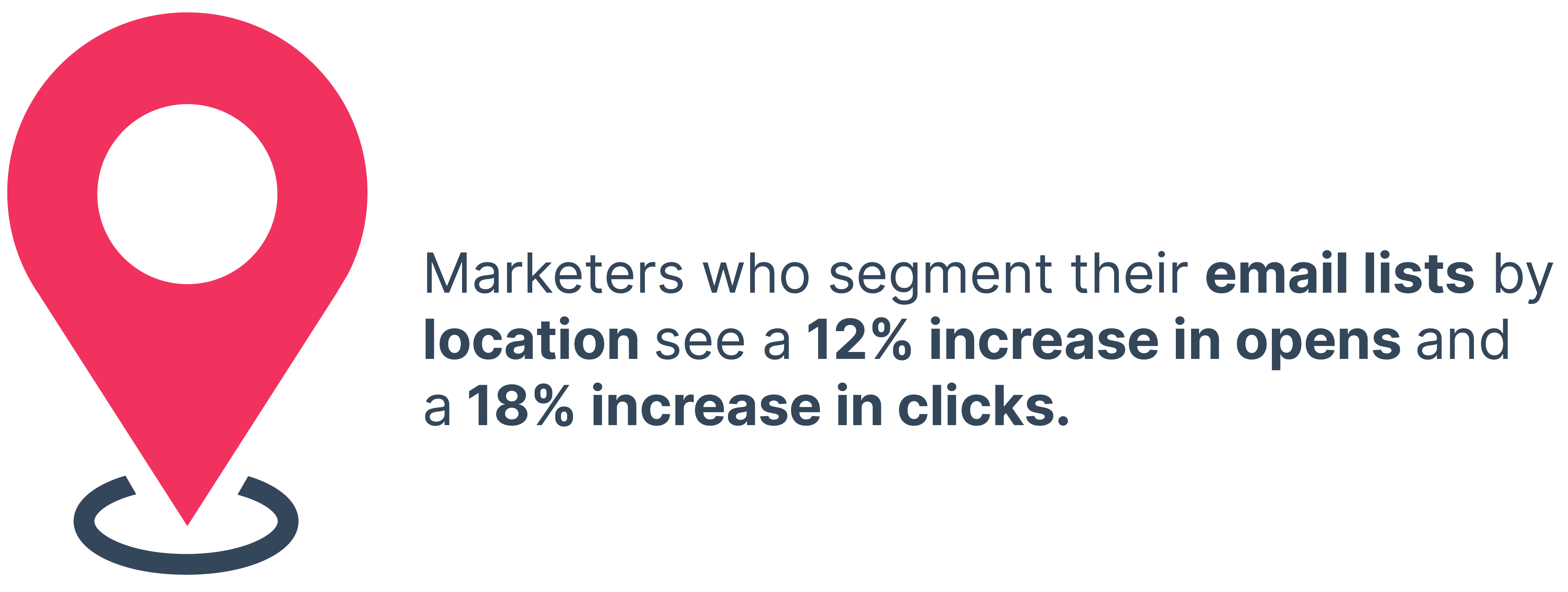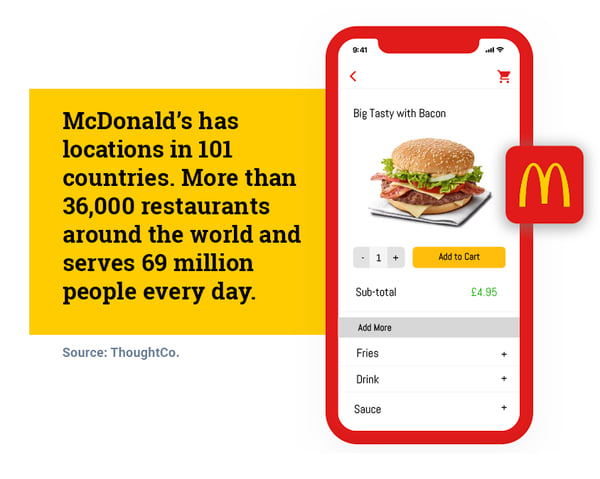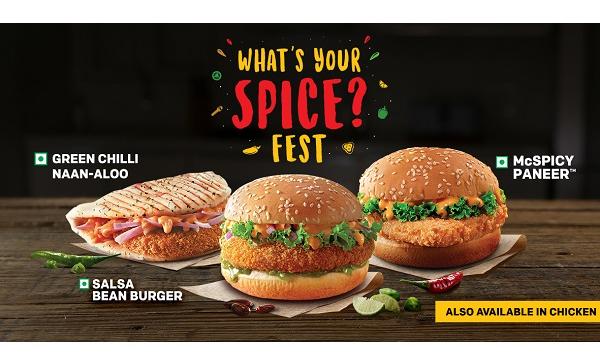5 Aspects of Geographic Segmentation that you Need to Know
Most modern marketers incorporate at least one form of market segmentation into their strategy. That’s because segmentation is so valuable to any brand or marketer looking to see real success.
What is market segmentation?
Market segmentation is essentially the process of defining and grouping consumers into smaller subsets based on common attributes like their shared needs, preferences, behaviours and motivations. The main goal of market segmentation is to better understand and serve the diverse needs of different customer groups. These carefully formed segments allow marketers to tailor their products, services, and marketing efforts more effectively, enabling them to make more informed and actionable decisions to deliver the right content to the right person at the right time.
Usually, marketers employ four distinct types of market segmentation, each characterised by unique features, specifications, and objectives. The choice of market segmentation can vary among companies, and the style of segmentation selected often hinges on the brand's personality, its products, services, or communication methods.
The 4 most prominent forms of market segmentation include:
- Demographic
- Behavioural
- Psychographic
- Geographic
What is geographic segmentation?
Geographic segmentation is a marketing strategy that involves dividing a larger market into smaller, more manageable segments based on various geographical factors. It allows marketers to tailor their products, services and marketing efforts to specific geographic regions or locations. The aim of geographic segmentation is to better meet the needs and preferences of customers in different areas, ultimately leading to more effective marketing campaigns and higher customer satisfaction.
Geographic segmentation is generally much more objective than other types of market segmentation. The data used to create the segments is factual, whereas psychographic and behavioural segmentation is much more subjective.
What are the benefits of geographic segmentation?
Geographic segmentation offers several benefits for businesses:
1. Targeted marketing: By dividing markets based on geography, companies can tailor their marketing efforts to specific regions. This ensures that marketing messages are relevant to the local population, increasing the chances of resonating with potential customers. Companies can customise their products or services to cater to the unique preferences and needs of customers in different regions. This localised approach can lead to increased sales and customer satisfaction.
2. Cost efficiency: Geographic segmentation allows for a more efficient allocation of marketing resources. Businesses can concentrate their efforts and budgets on areas with a higher concentration of potential customers, reducing wasted resources on less promising markets.

Source: Qualtrics
3. Competitive advantage: Geographic segmentation enables businesses to identify and respond to regional competitors more effectively. This can help in devising competitive strategies that are specific to each market.
4. Risk mitigation: Diversifying across different geographic markets can help mitigate risks associated with economic downturns or market-specific challenges. If one market faces difficulties, revenue from other regions can help offset losses.
5. Market expansion: Geographic segmentation can also reveal untapped markets or regions with potential for growth. This insight can guide expansion strategies and market entry decisions.
6. Improved product distribution: Understanding the geography of demand can lead to better distribution strategies. Businesses can optimise their supply chains and inventory management to meet regional demands efficiently.
7. Customer insights: By analysing data from various regions, businesses can gain valuable insights into regional preferences, cultural differences, and buying behaviours. This information can inform product development and marketing strategies.
Examples of geographic segmentation
Location
It's vital to recognise that consumer behaviours and preferences often vary significantly depending on where people are located. Location is more than just a user’s country. However, it also refers to world regions, different states, counties, cities and neighbourhoods.
An example of this would be Mercedes-Benz. They employ geographic segmentation to target their customers with different models and features. In colder northern states, they may emphasize all-wheel-drive models with advanced heating systems, catering to customers' needs for winter driving. In sunnier and warmer states like Florida or California, they may focus on convertible models and sunroof options, appealing to those who want to enjoy the pleasant weather. By tailoring their product offerings based on geographic location, Mercedes can better satisfy customer demands and capture market share.

Source: Campaign Monitor
Urbanicity
This takes into account whether the individual lives in an urban, suburban, exurban or rural area. Urban generally describes city areas, suburban is the area on the outskirts of the city, exurbs are further outside of the suburbs and rural relates to the countryside.
To demonstrate the potential differences in the needs of those consumers with different urbanicities, consider a company that sells bicycles. Carrying out geographic segmentation research is likely to find that those in the urban areas prefer lightweight bikes, as the slightness of the frame, and the small tyres, allow the cyclist to be agile among traffic. Alternatively, rural cyclists may prefer robust, heavy-duty bikes which have thick tyres, perfect for navigating mountains and rough terrain. Having this knowledge and awareness will allow the company to tailor their marketing to each area, to ensure those living in rural areas are targeted with different bikes than those living in the inner city.
Urbanicity also accounts for an area’s population density, which is significant for brands trying to decipher whether products will be in high or low demand. For example, high-density cities, are likely to have a higher demand for fast-food or grab-and-go products compared to areas dominated by farmland. So the marketing strategies put in place for each location will be entirely different.
Climate
Climate is a big one for brands to take into consideration. It’s a key aspect of geographic segmentation, as products and services that are relevant to each climate are likely to be very different. According to National Geographic, there are typically 5 climate groups:
- Tropical
- Dry
- Mild
- Continental
- Polar
Climate plays a significant role in geographic segmentation, particularly in industries where weather conditions influence consumer behaviour and product demand. Tropical regions are definitely one of the most extreme of the climate groups, and due to the weather, there is often a higher demand for refreshing and cold beverages. Therefore, a soft drink manufacturer might prioritise marketing campaigns for carbonated sodas, iced teas, and fruit-flavoured drinks in these areas. They may also introduce larger-sized or multipack options to cater to consumers looking for ways to stay hydrated in the heat. Mild climates, as the name states, offer milder weather, where the summers are typically hot and the winters are cold and rainy. Marketing to this climate might be slightly easier as the seasonal weather is so predictable.
Polar climates exist in areas surrounding the Arctic Ocean, Greenland and Antarctica and can experience temperatures of around -30°C at the height of winter. So, the same soft drink company might adjust its marketing efforts to promote hot beverages like coffee, tea or hot chocolate.
Culture
Cultural differences and preferences have a huge role to play in geographic segmentation. This is mostly because culture in itself isn’t simply defined by the country a person lives in. Culture can be formed or influenced by things like religion, communication, environment and agreed-upon social behaviours and norms. Cultural preferences also tend to shape our morals, ideals and, often, overall identities.
Culture can dictate things like the activities we engage in, the music we listen to or the food we eat. Have you ever wondered why or how McDonald’s is so successful at home and overseas? It doesn’t matter which city you go to, you’ll likely come across a McDonald's.
But if you’re expecting to always get the products that you're used to, you might be disappointed. McDonald’s realises that not every country or culture will enjoy the same foods, so they tailor their products to suit each market. For example, in Japan, you can get a Teriyaki burger, India offers a McSpicy Paneer burger, which features the traditional Indian cheese, paneer, and in New Zealand, you might be lucky enough to stumble upon the classic New Zealand Georgie Pie.
Source: McDonald's
Language
While the primary common language of the world is English, not every country is bilingual or wants to read an ad in their second tongue. Language, therefore, affects things like labelling, digital communication, promotional material and so on.
Take streaming service Netflix as an example. They operate globally, each with its own set of languages. To effectively serve their audiences, Netflix uses geographic segmentation based on language preferences. So when you visit Netflix's website or app, the content is displayed in the language relevant to your location. For instance, if you're in France, the interface and content recommendations will be in French. The same goes for their email notifications and push notifications. These are sent in the language specified by the user or based on their geographic location. If you're in a Spanish-speaking region, you'll receive emails in Spanish.
For a global product, it’s important to take language differences seriously and to make sure the translation is precise and on point. One notorious example of a language translation gone wrong involves PepsiCo's slogan "Come Alive with Pepsi" in the 1960s. When Pepsi expanded into the Chinese market, they translated this slogan into Chinese as "Pepsi Brings Your Ancestors Back from the Grave". The translation blunder occurred because the Chinese characters chosen for "Come Alive" can also mean "revive from the dead" or "resurrect." This resulted in a slogan that was not just confusing but also culturally inappropriate and even offensive. This example illustrates the importance of not only accurate translation, but also cultural sensitivity when entering new markets. A seemingly harmless phrase in one language can have drastically different connotations in another, potentially harming a brand's reputation.
Conclusion
Geographic segmentation is undoubtedly one of the most effective forms of market segmentation for any brand looking to go global. Even local brands can benefit from geographic segmentation. Much like with demographic segmentation, alone it can seem quite clinical; objective with no insight into the personalities of consumers. But when paired with the likes of behavioural or psychographic segmentation, the possibilities are endless.
Essentially, incorporating any form of market segmentation into your marketing strategy is going to benefit the brand in some way. The better you know your consumers, and the more personalised offer you can provide, the greater chance your brand has of seeing success and achieving those sought-after actionable insights that will put you ahead of your competitors, and skyrocket you to success.
Share this
You May Also Like
These Related Stories

[Guide] The SMART Guide to Market Segmentation

Firmographic Segmentation: 7 Essential Elements





